In the last few years Fort Worth has gotten more bridge work than a punch-drunk boxer: bridges being imploded (Weatherford Street), bridges being built (a new sibling for the Three Sisters railroad bridges, Phyllis J. Tilley Memorial Bridge, bridges on Clearfork Main Street, Hulen Street, and West 7th Street, and over Sycamore Creek in Gateway Park).
 Not to mention a pedestrian bridge over the Trinity River next to the bridge for the Forest Park miniature train.
Not to mention a pedestrian bridge over the Trinity River next to the bridge for the Forest Park miniature train.
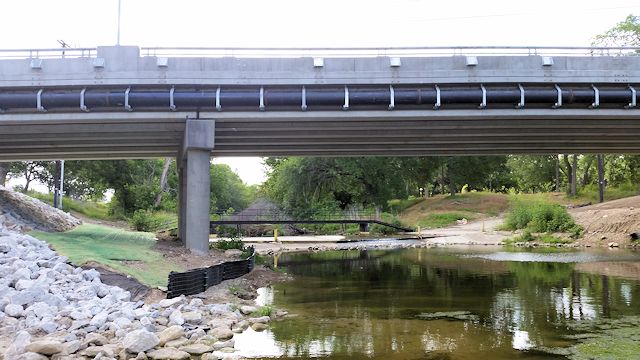 Also this orphaned channel of the Clear Fork of the Trinity in 2018 received two bridges—both vehicular and pedestrian—on Watercourse Drive as part of development of the Waterside “lifestyle/mixed-use development.”
Also this orphaned channel of the Clear Fork of the Trinity in 2018 received two bridges—both vehicular and pedestrian—on Watercourse Drive as part of development of the Waterside “lifestyle/mixed-use development.”
And new bridges are planned: two bridges for North Riverside Drive, three for the bypass channel of Panther Island.
Whew.
But then Cowtown goes on a bridge binge every century or so. In 1913 Fort Worth had just finished building one bridge over the Trinity River and was working on four more.
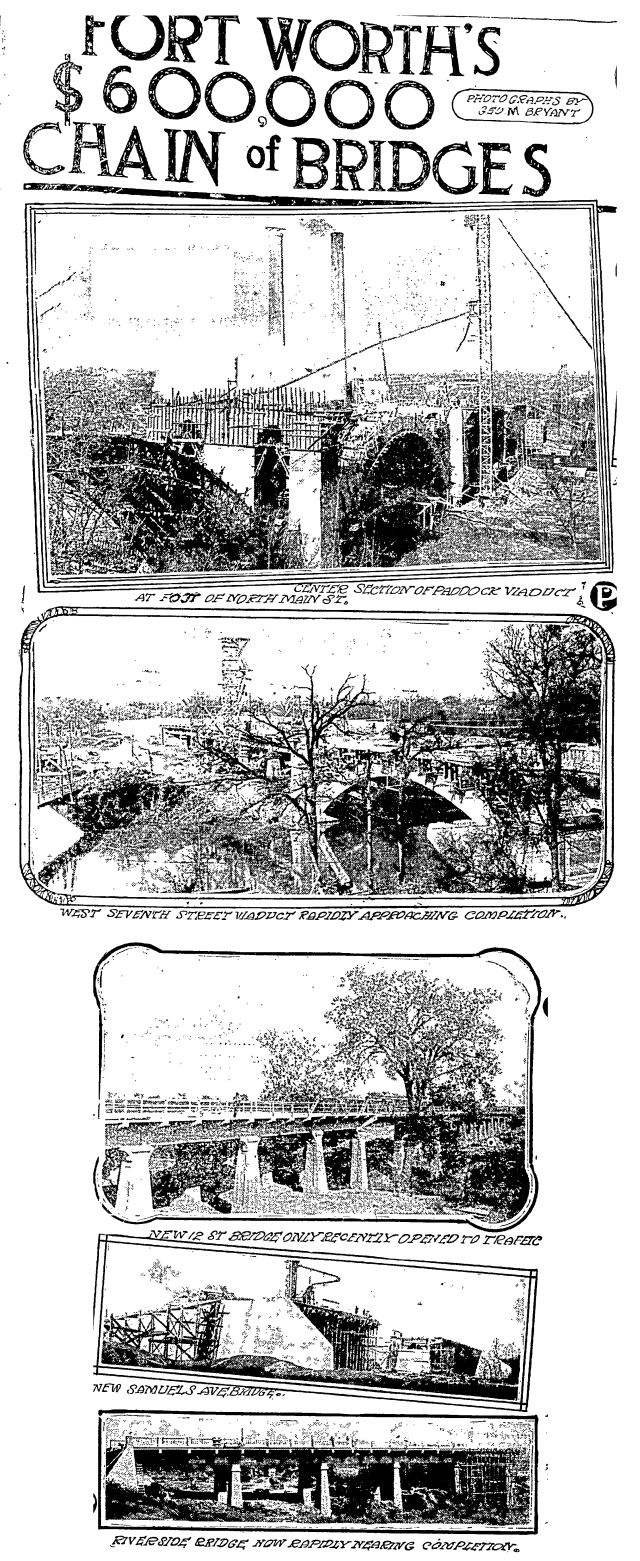 These photos from a full-page spread in a Star-Telegram of December 14, 1913 show Fort Worth’s bridge projects. Just completed was the 12th Street (Northside Drive today) Bridge. Under construction were the Paddock Viaduct, the Samuels Avenue Bridge, the West 7th Street Bridge (Van Zandt Viaduct), and the Riverside Bridge. Total cost for all five: $600,000, the Paddock Viaduct accounting for half that total.
These photos from a full-page spread in a Star-Telegram of December 14, 1913 show Fort Worth’s bridge projects. Just completed was the 12th Street (Northside Drive today) Bridge. Under construction were the Paddock Viaduct, the Samuels Avenue Bridge, the West 7th Street Bridge (Van Zandt Viaduct), and the Riverside Bridge. Total cost for all five: $600,000, the Paddock Viaduct accounting for half that total.

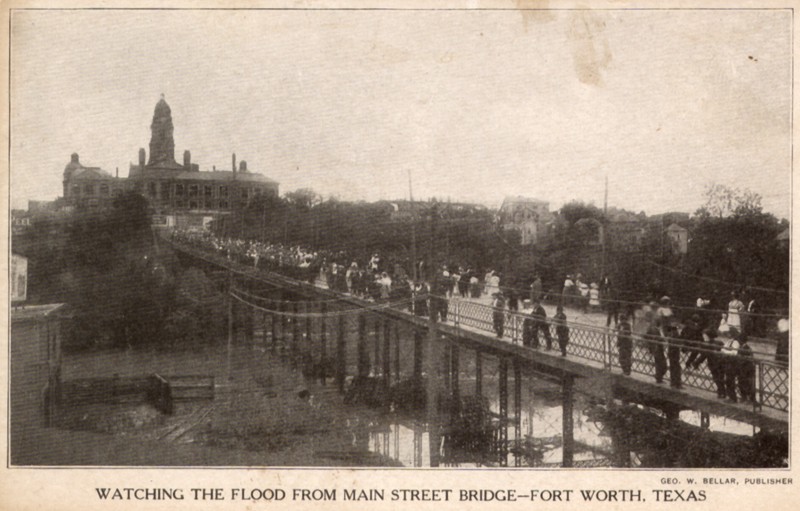 The Paddock Viaduct replaced an iron bridge. The top photo was taken in 1891, the bottom photo during the flood of 1908. Note the streetcar tracks on the bridge. (From Pete Charlton’s “1000+ Lost Antique Maps of Texas & the Southwest on DVD-ROM.”)
The Paddock Viaduct replaced an iron bridge. The top photo was taken in 1891, the bottom photo during the flood of 1908. Note the streetcar tracks on the bridge. (From Pete Charlton’s “1000+ Lost Antique Maps of Texas & the Southwest on DVD-ROM.”)
 The cost of building a bridge is not only in dollars.
The cost of building a bridge is not only in dollars.
 The five bridge projects encountered the usual construction delays. For example, the West 7th Street Bridge opened on January 15, 1914, but the Paddock Viaduct was not formally opened until July 3, 1914. Ten thousand people gathered to witness parades, speeches, fireworks. In a gesture of cross-river unity, at a signal an automobile carrying dignitaries from the south side of the river drove north over the bridge, and an automobile carrying dignitaries from the north side of the river drove south over the bridge, both cars passing through “a rope of carnations and evergreen” that was stretched across the middle of the bridge.
The five bridge projects encountered the usual construction delays. For example, the West 7th Street Bridge opened on January 15, 1914, but the Paddock Viaduct was not formally opened until July 3, 1914. Ten thousand people gathered to witness parades, speeches, fireworks. In a gesture of cross-river unity, at a signal an automobile carrying dignitaries from the south side of the river drove north over the bridge, and an automobile carrying dignitaries from the north side of the river drove south over the bridge, both cars passing through “a rope of carnations and evergreen” that was stretched across the middle of the bridge.
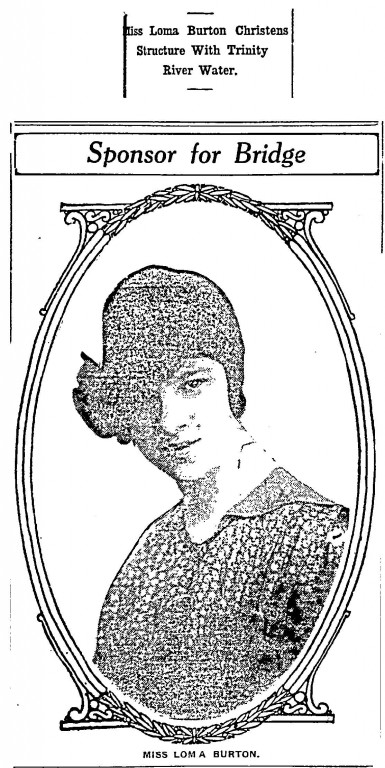 Miss Loma Burton, a young woman who had been chosen to be the “sponsor” of the bridge, lifted a purple-and-white-draped bottle of Trinity River water, smashed the bottle against the pavement of the bridge, and proclaimed, “I christen thee ‘Paddock.’”
Miss Loma Burton, a young woman who had been chosen to be the “sponsor” of the bridge, lifted a purple-and-white-draped bottle of Trinity River water, smashed the bottle against the pavement of the bridge, and proclaimed, “I christen thee ‘Paddock.’”
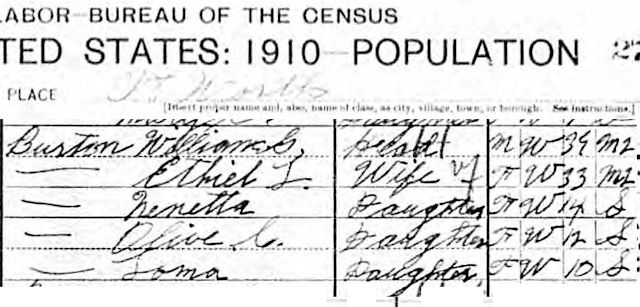 (Four years later Loma Burton’s older sister Nenetta would marry Amon Carter.)
(Four years later Loma Burton’s older sister Nenetta would marry Amon Carter.)
Civic leader and bridge namesake Captain B. B. Paddock (1844-1922), then seventy years old, spoke briefly and humbly to the crowd, saying that he appreciated the honor and that he hoped that in the remaining years of his life, “there should be nothing which would cause regret that the name had been chosen.”

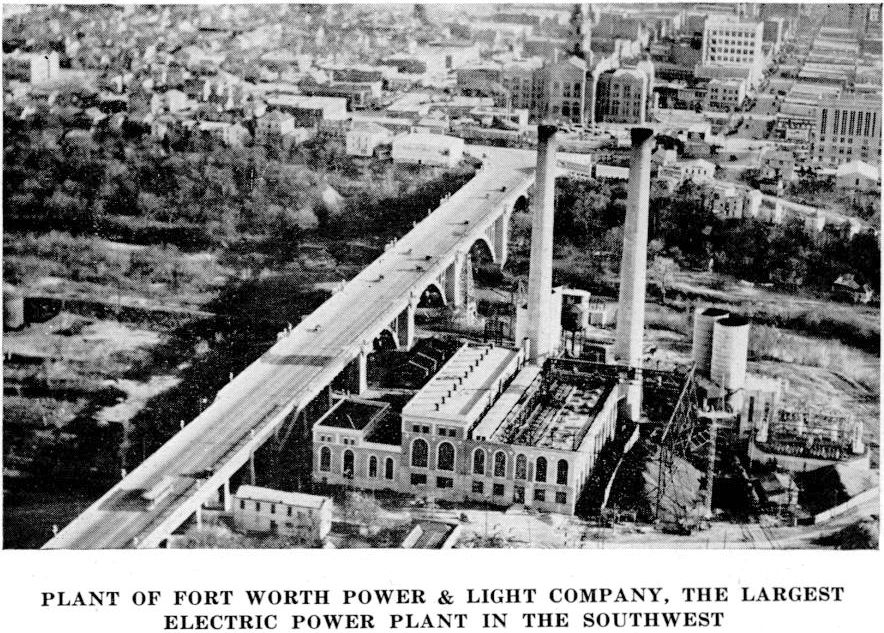 The viaduct (and power plant) in 1921.
The viaduct (and power plant) in 1921.
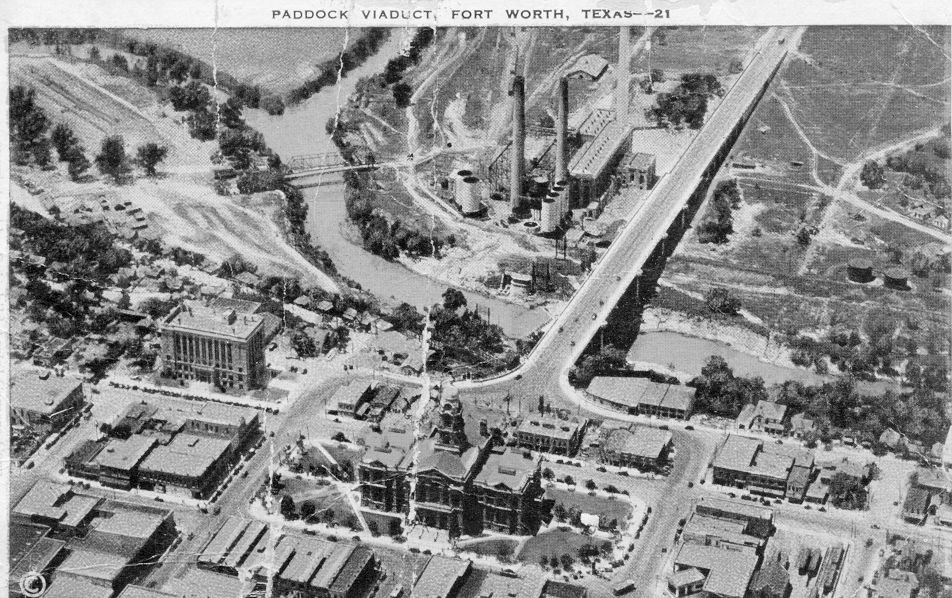 This aerial photo from another angle shows yet another bridge: Just below the confluence of the Clear and West forks was the Bridge Street cable suspension bridge (1892), which connected downtown with Cemetery Avenue, which led to Oakwood. (Photo from Tarrant County College NE, Heritage Room.)
This aerial photo from another angle shows yet another bridge: Just below the confluence of the Clear and West forks was the Bridge Street cable suspension bridge (1892), which connected downtown with Cemetery Avenue, which led to Oakwood. (Photo from Tarrant County College NE, Heritage Room.)
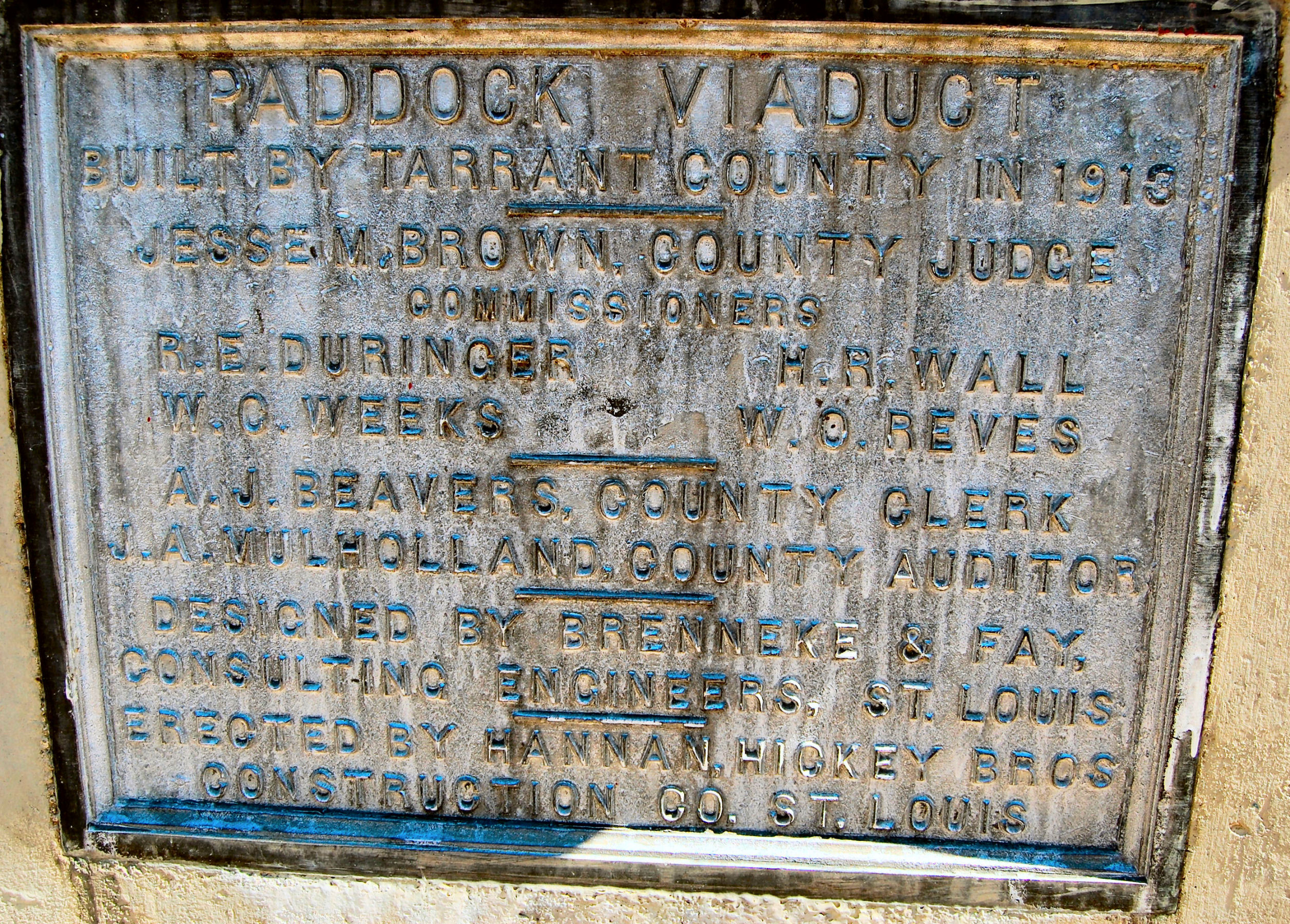
More on the Paddock Viaduct:
Paddock Viaduct: Translating Specs Into Spectacular





